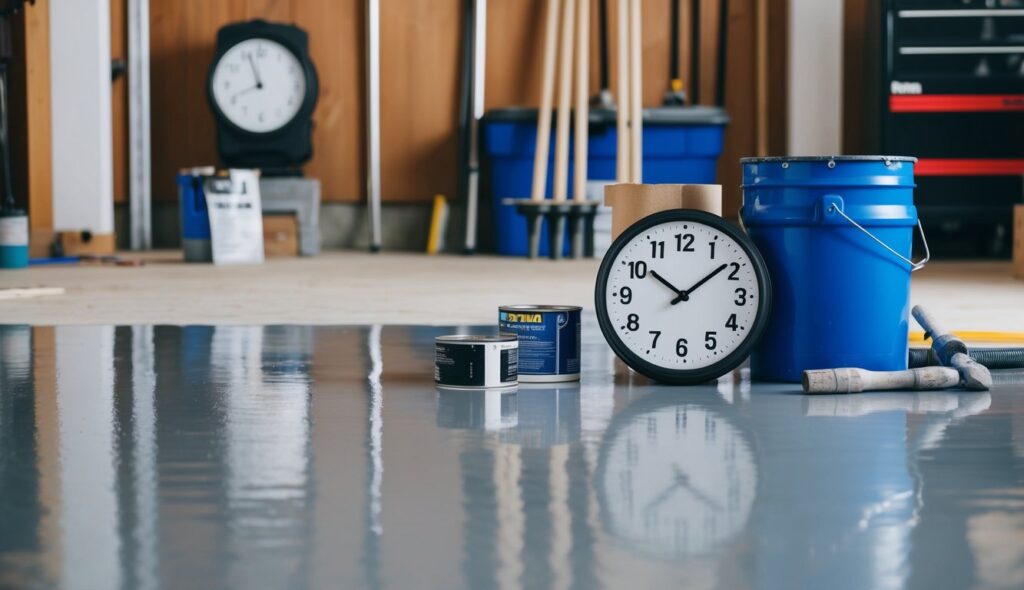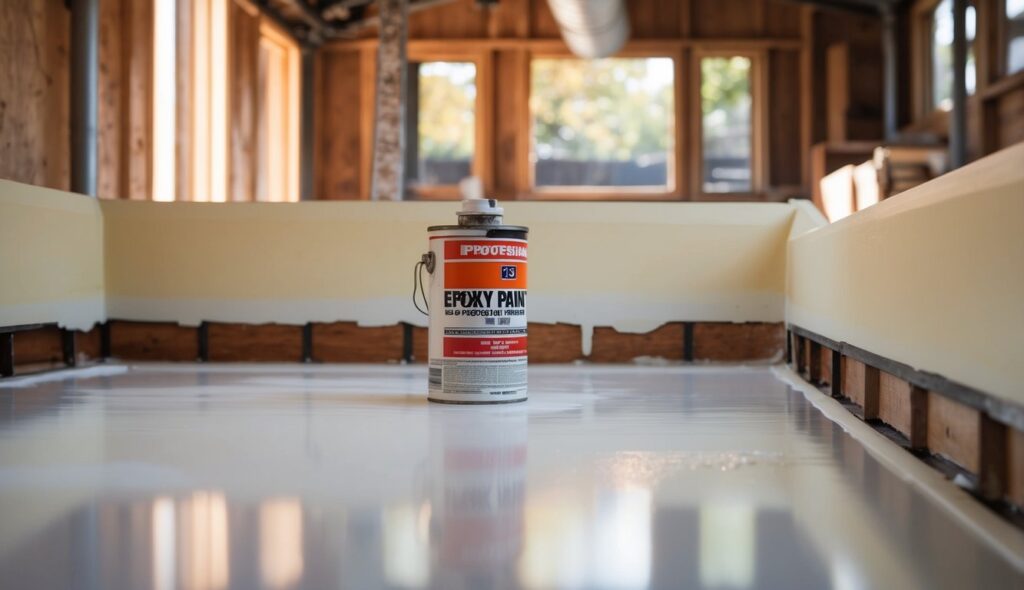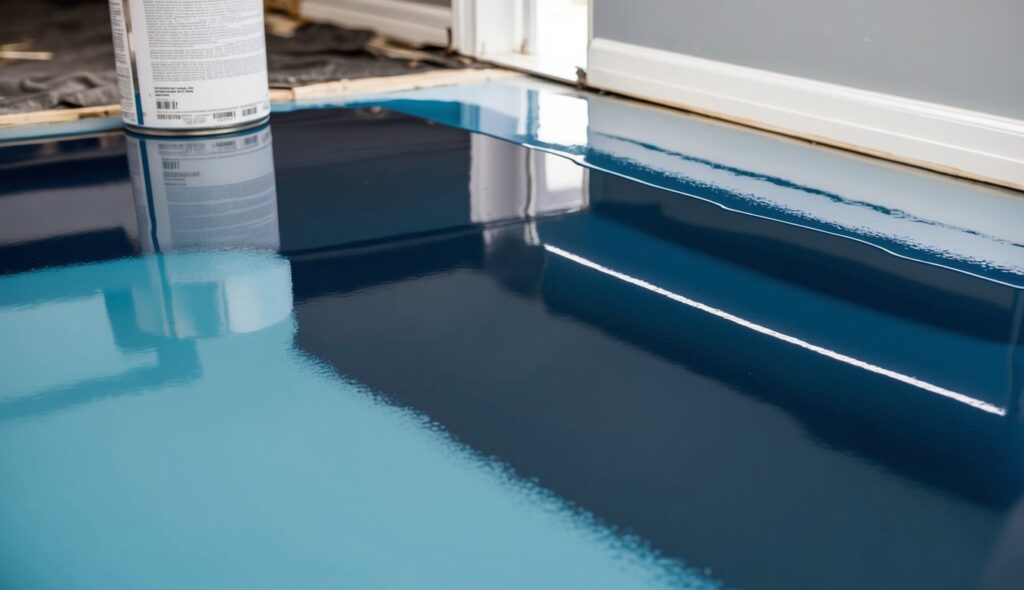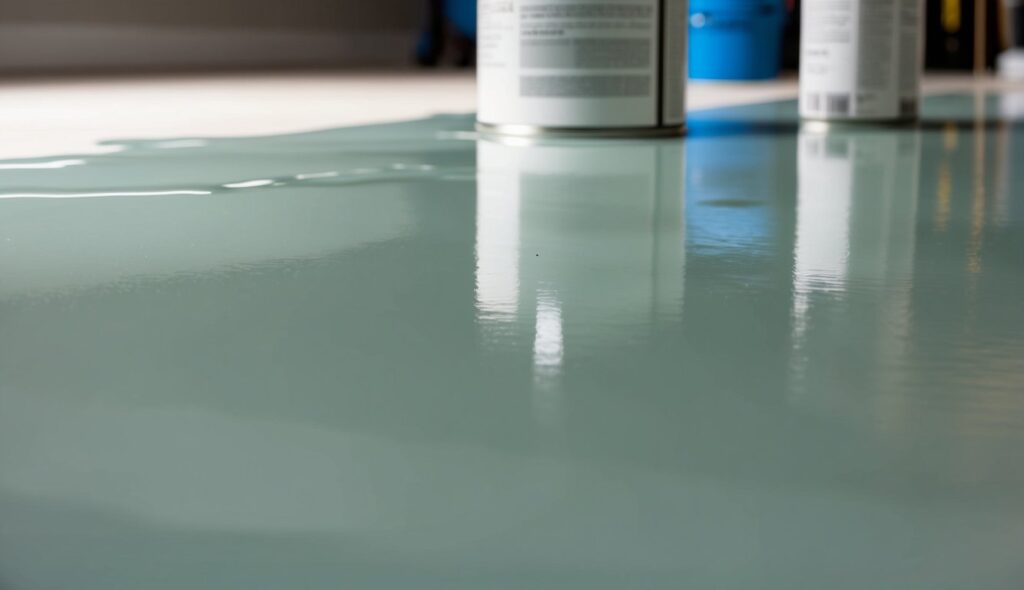How Long Does It Take Epoxy Paint To Dry: A Quick Guide for DIY Enthusiasts
When working with epoxy paint, one of the essential things you need to know is how long it takes to dry. Epoxy paint typically dries to the touch in about 24 to 72 hours, but reaching full cure can take up to 7 days or more, depending on the specific conditions. This can feel like an eternity if you’re eager to see your finished project, but patience is key to a strong and lasting result.

Are you wondering why the drying time seems to vary so much? It all comes down to factors like temperature, humidity, and the type of epoxy you’re using. If you’ve ever found yourself in a sticky situation because your paint isn’t drying fast enough, you’re not alone. It’s a common issue that many DIY lovers face, so you’re in good company as we dig into what affects these drying times.
Whether you’re sprucing up your garage floor or creating a masterpiece on canvas, getting the timing right with epoxy paint is crucial. When you know what to expect, you can plan your project like a pro, ensuring everything from application to curing goes smoothly. Let’s explore what you need to do to make your epoxy project a success!
Understanding Epoxy Paint
Epoxy paint is a versatile substance that stands out for its durability and strong adhesion. As you go through this section, you’ll learn about what it’s made of and why it’s such a popular choice for many projects.
Composition of Epoxy Paint
Epoxy paint is crafted using a combination of epoxy resin and a hardener. This two-part system creates a chemical reaction that forms a strong, durable surface. The epoxy element of the paint gives it toughness, while the hardener acts to solidify and cure the mix.
Once mixed, these components offer fantastic qualities like resistance to chemicals and impacts. Epoxy resin is key here, providing flexibility that helps the paint endure different environments. Whether applied on floors or in industrial settings, the unique composition of this paint ensures lasting performance.
Benefits of Using Epoxy Paint
Why should you care about epoxy paint? First off, durability is a huge plus. It holds up well in high-traffic areas and can withstand a lot of wear. This paint is also highly resistant to chemicals, so spills or harsh cleaners won’t damage it easily.
Adhesion is another big win. The paint sticks to surfaces firmly, providing a strong protective layer. And let’s not forget about its versatility. You can use epoxy paint on floors, walls, and even countertops. The chemical resistance and easy maintenance make it ideal for both home and industrial use, giving you peace of mind and a surface that looks great for years.
Preparing for Application

Getting ready to paint with epoxy involves important steps to make sure everything goes smoothly. You’ll want to focus on preparing the surface and applying the first thin paint coat correctly for the best results. Here is what you need to know.
Surface Preparation
Before you even think about picking up a brush, make sure your surface is ready. This isn’t just about dusting off the area. Concrete surfaces, in particular, need serious attention. They must be clean, dry, and free of oil or other residues. Using a degreaser can help tackle any stubborn grime.
Ensure the surface is smooth and level. Sand it down if you need to. Patch any cracks or holes since these might ruin your finish later. A smooth surface helps the paint bond better and look great.
Once everything is clean and level, consider doing a test patch in a hidden spot. This assures you that the surface is fully ready for painting. If it looks off, more preparation might be necessary.
Applying the First Coat
Now comes the exciting part: Applying the first coat. Keep in mind that thin coats work best. Applying a thick coat might seem quicker, but it often results in bubbles or improper curing. Better to layer multiple thin coats for a durable finish.
Mix your epoxy paint thoroughly before applying. Use a brush or roller to apply the first coat. Pay attention to edges and corners—these spots are easy to miss.
After the first layer is on, let it dry completely. This typically takes 24 to 48 hours, but it varies based on ventilation and humidity. Check the instructions on your epoxy product for specifics as this will guide you on exact drying times. Once dry, inspect it before deciding if a second coat is necessary.
Factors Affecting Drying Time

Epoxy paint drying time can be influenced by multiple factors like temperature, humidity, air circulation, and the number of coats applied. These elements can determine how quickly or slowly your project will dry. Let’s explore how each of these can play a role in your work.
Temperature and Humidity
Temperature and humidity are big players in how epoxy dries. If you’re working in a warm room, your epoxy will likely dry faster. Typically, ideal room temperatures for drying range from 60°F to 90°F (15°C to 32°C).
Humidity levels also matter. You’ll want humidity between 40% and 60% for the best dryness. If it’s too humid or too cold, drying time can drag out, leading to sticky finishes. So, always check both temperature and humidity before starting!
Air Circulation and Ventilation
Ever wonder why some folks use fans while painting? It’s all about air circulation. Proper ventilation helps speed up the drying process by allowing moisture to escape. Think of it as giving your paint room to breathe.
Without airflow, moisture might hang around too long. Use a fan or open windows if you can. Just remember, direct wind might cause uneven drying, so aim for consistent airflow to prevent issues.
Thickness of Epoxy Coats
Wondering if more coats mean more drying time? You’re spot on! Thicker coats of epoxy take longer to cure than thin coats. If you’re in a rush, a thinner application might be your best bet.
When layering, each coat should be given ample time to dry before the next one is added. This ensures that you don’t trap any moisture, which can cause problems later. So, take it coat by coat for a smooth, hard finish!
Epoxy Paint Drying Phases

Epoxy paint drying involves multiple stages, starting with the initial drying to the touch and ending with the full curing process. The complete transition is crucial for ensuring durability and adherence over time.
Initial Drying Stage
In the initial drying stage, the epoxy paint begins to harden and becomes dry to the touch. Depending on the type of epoxy, this can happen anywhere from 4 to 12 hours after application. Environmental conditions like temperature and humidity can greatly impact the drying time, so make sure your workspace has good air circulation.
A one-part epoxy may allow for re-coating after about 4-6 hours, while a two-part epoxy might take up to 8 hours before it’s ready for another layer. Want to speed things up? Try increasing the ambient temperature a bit, but don’t go overboard!
Keep in mind that while the paint might seem dry, the curing process still needs to work its magic. Moving or sanding the object during this stage could mess up the finish.
Curing Process
The curing process is where the magic of epoxy paint really happens. This stage involves a chemical reaction that strengthens the paint, making it durable and resistant to wear. For one-part epoxy paints, expect a full cure to take around 4 days. For two-part epoxies, you’re looking at up to 7 days.
During curing, it’s vital to avoid any heavy use or cleaning of the painted surface. It might seem like a long time, but patience pays off. Proper curing ensures that your paint won’t chip or peel easily over time.
If you’re using solvent-based epoxy, remember that it generally takes longer to cure compared to water-based options. In some cases, full cure might even extend beyond two weeks, so plan accordingly based on your project timeline.
Enhancing Epoxy Paint Drying

To make sure your epoxy paint dries faster, it’s crucial to consider environmental factors and use tools like dehumidifiers and fans. These methods can significantly reduce drying time and improve the finish.
Optimizing Environmental Conditions
You know what? Temperature and humidity play big roles in how long it takes epoxy paint to dry. Keeping the room’s temperature between 60°F and 90°F (or 15°C to 32°C) can make a huge difference. At these temperatures, solvents evaporate at just the right pace.
Humidity is the next big thing. If you can, aim for humidity levels between 40% and 60%. Lower humidity speeds up drying by allowing moisture to escape more quickly. If it’s too humid, use a dehumidifier to balance it out.
Increasing air circulation is also essential. Keeping windows open or using an exhaust fan can move the air around, helping the paint to dry more rapidly. Remember, stagnant air is not your friend when it comes to painting.
Effective Use of Dehumidifiers and Fans
Dehumidifiers work by absorbing moisture from the air, making it less humid. This helps epoxy paint lose moisture faster, shortening drying time. Make sure to choose a dehumidifier size that fits your space for best results.
Fans are fantastic for boosting air movement. Place them strategically in the room to create a gentle current that carries off evaporated chemicals. You can use ceiling fans or portable fans.
Want to turbocharge the drying process? Try using both tools together. By decreasing humidity with a dehumidifier and increasing airflow with fans, you’ll see drying times improve significantly. These tweaks can give your project the high-quality finish you’re after.
Final Touches and Aftercare
Once the epoxy paint has dried, there are a few steps to ensure a long-lasting finish. Applying a second coat and proper maintenance can improve durability and appearance over time.
Applying a Second Coat
Considering a second coat for your epoxy paint? It can enhance the finish and extend the longevity of the surface. Typically, the second coat should be applied once the first layer is dry to the touch but still tacky. This usually occurs within 4 to 24 hours, depending on conditions like temperature and humidity.
For garage or concrete floors, a second coat is beneficial. It provides extra protection against wear and tear. Be sure to follow the manufacturer’s instructions for best results, and use a clean roller or brush to avoid any imperfections. Just remember, more paint doesn’t always mean better protection.
Maintenance and Longevity
Maintaining your newly painted epoxy surface is key. Regular cleaning helps preserve its shine and durability. For instance, you should sweep garage floors frequently to avoid scratches from dirt and debris. A mild detergent mixed with water can be used for a deeper clean.
For tougher stains, a soft scrub brush will do the trick without harming the surface. To prolong the epoxy’s lifespan, avoid abrasive cleaners. Regular maintenance ensures the longevity of your investment. With proper care, your epoxy surface can look great for years!
Special Considerations for Epoxy Paint
When using epoxy paint, it’s crucial to understand different uses and the importance of following the manufacturer’s instructions. These factors can significantly impact the drying and curing process.
Industrial and Residential Use
Epoxy paint is popular in both industrial and residential settings due to its durability. Industrial applications, like factories and warehouses, often require epoxy floor coatings for their resilience and protection against heavy machinery and chemicals. These spaces usually need thicker coatings, which can extend drying times.
In residential areas, epoxy is often used on garage floors to provide a tough, glossy finish. Garage floors, frequented by cars, need quicker drying solutions to minimize disruption. Polyamine hardeners, sometimes used, help speed up curing but require precise handling. Careful measurement ensures a lasting coat for both home and industrial spaces.
Following Manufacturer’s Instructions
Following the manufacturer’s instructions is essential for achieving the best results with epoxy paint. Each brand and type of epoxy might have unique requirements for temperature, humidity, and mixing ratios. Ideal conditions generally fall between 60°F and 90°F, with 40%-60% humidity.
Sticking to these guidelines ensures efficient drying and curing. Additionally, pay attention to any specific recommendations about ventilation and application techniques. Not adhering to these could result in a compromised finish, wasting both time and resources. Following these steps closely will maximize the performance and lifespan of your epoxy paint application.
Troubleshooting Common Issues
Epoxy paint drying problems can be frustrating, but they are not impossible to solve. Tackiness and moisture content are two key concerns. Let’s see how you can avoid and address these issues.
Avoiding and Addressing Tackiness
Dealing with tacky epoxy is like wrestling with sticky tape—only with messier consequences. Tackiness often happens due to improper mixing or environmental factors like humidity and temperature.
To avoid this, ensure you measure the epoxy components precisely. Then, check that your workspace is at a suitable temperature, usually between 70 to 75 degrees Fahrenheit. This helps the epoxy cure properly.
If your epoxy remains tacky, don’t panic. Wait a little longer for it to dry. Sometimes, warmer temperatures can speed up the curing process. If problems persist, you may need to add another layer for it to harden.
Got a hairy situation with dirt sticking to your tacky epoxy? A gentle sand with fine-grit sandpaper can smooth things out. Just ensure you recoat properly to seal the deal.
Assessing Dryness with a Moisture Meter
A moisture meter can be your best friend when you’re trying to figure out if your epoxy is dry. These handy devices help you check if there’s too much moisture left in your paint.
First, measure the moisture content of the surface before applying epoxy. Keep below 12% moisture levels to prevent future issues. Use your moisture meter to monitor.
If the epoxy paint feels dry to touch but still tests moist, it might need more time. A 24 to 72-hour window is typical for curing, but factors like humidity might extend this time.
Struggling to gauge yourself? Trust your moisture meter readings for an objective viewpoint. They’re worth the investment for anyone serious about epoxy work.
